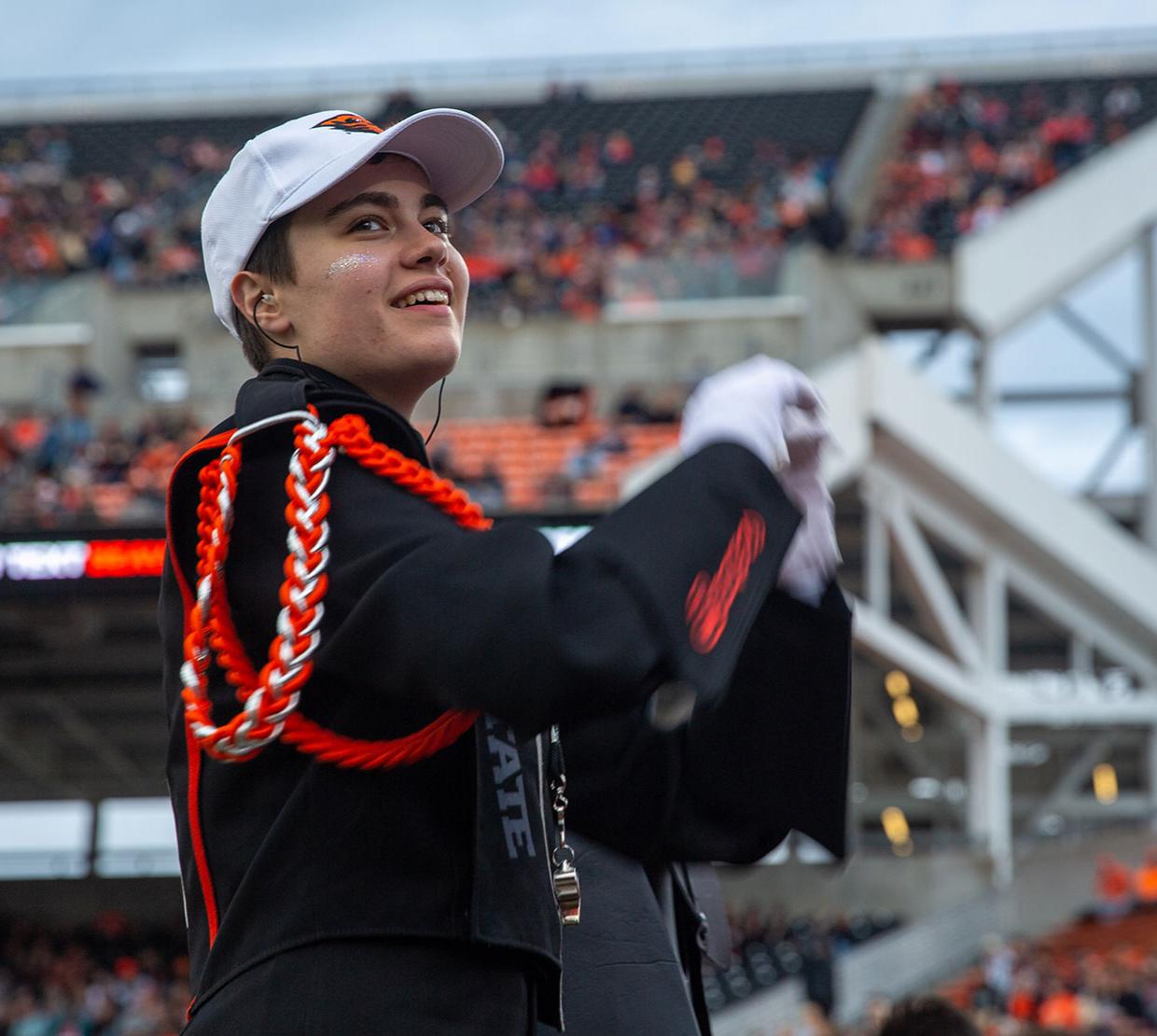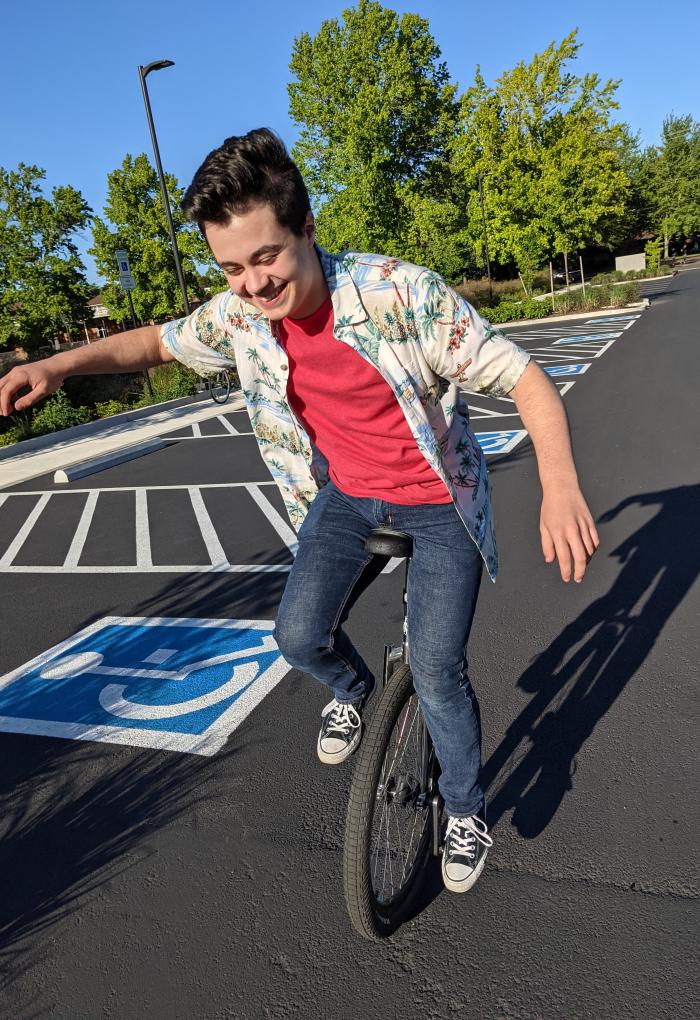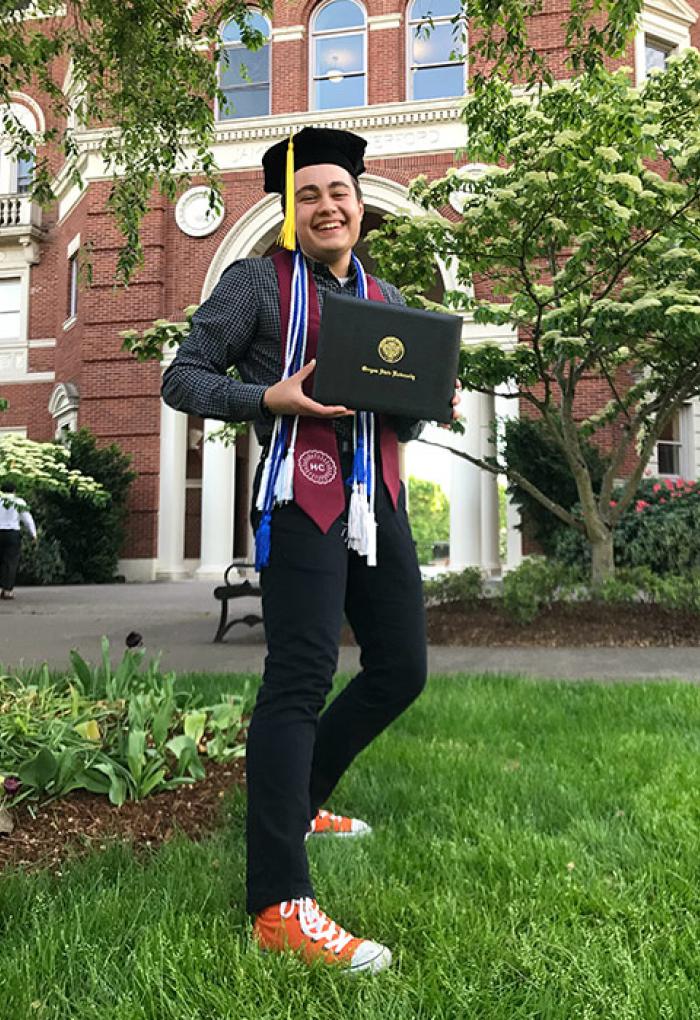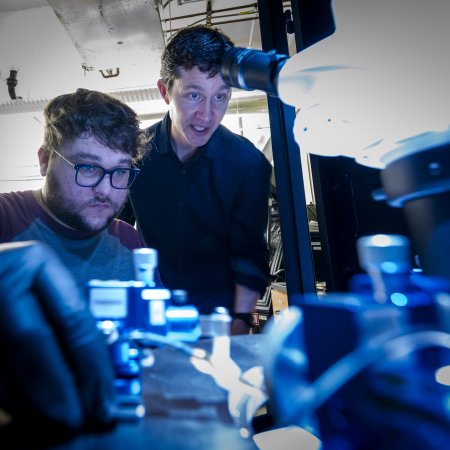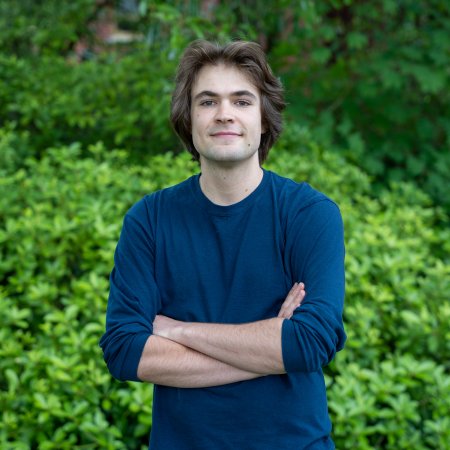Chemistry with real-world applications
Entering OSU with International Baccalaureate credits and an aptitude for chemistry, Unitan was on the fence about whether he should take honors general chemistry first, or continue right into organic chemistry — generally taken sophomore year. After attending the first lecture with Chemistry Professor Vince Remcho, he decided he knew the material enough to go on ahead, but — he really liked the professor.
"I decided to go to his office hours to say 'hello, I'm dropping your class — but not because I'm scared of it,’” he said. “We got to talking about his research, and he asked if I would come to a group meeting next week.”
“He’s been there for me with a can of seltzer and unconditional support every step of the way, I can’t thank him enough.”
As an analytical chemist, Remcho's lab uses high-tech machinery to assess the structure and composition of matter. “Some of the machines I use in the Remcho lab include the laser cutter, spin-coater, D300 dispenser, and home-built oxygen radical decontaminator,” said Unitan. "The laser cutter is definitely my favorite — to practice using it I designed and made a bunch of greeting cards," he said.
The lab is particularly interested in making microfluidic blood separators — glass microfiber membrane-based devices that are treated to have channels that blood can flow through. Roughly the size of a silver dollar, these devices have the ability isolate plasma from as little as a pinprick volume of blood — a far cry from the blood-work that normally takes place in a laboratory. This will be highly desirable for a number of applications; for instance, helping increase access to diagnostic services in settings where access to advanced medical equipment is limited.
Originally, when the device separated plasma from other blood cells, its use was limited to what could be studied on the device itself. Unitan's individual research project focused on finding a way to extract the plasma so that it could be studied separately.
"We tried all sorts of things and ended up focusing on this sort of two-sided device that had a wicking component and a cut-capillary component where the fluid could be gathered into one spot and pipetted out," he said.
This option of sample collection helps open up a broad range of applications, including a wider range of diagnostics that extend into environmental monitoring. The patent-pending 'blood separation and diagnostic device' is now awaiting approval from the U.S. government to make these products commercially available.
"I like the machines, I like the chemistry being used in immediate application of something — taking the principles and harnessing them to impact peoples’ lives."
Unitan's efforts have resulted in a recently accepted second-author paper in Analytical and Bioanalytical Chemistry, and he has presented at conferences including the 35th International Symposium on Capillary Chromatography in Fort Worth, TX, and the 43rd Microscale and Bioanalysis Conference, which the Remcho group hosted at Oregon State.
"His insightful bent for research — coupled with his cheerful spirit, willing heart, and talented hands — have made him an invaluable member of our lab," said Remcho. "Linus is destined for great things and will lift those around him as he moves forward."
Although both of his parents are physicians, for Unitan the real draw to medicine is in the way it applies science to some of the world's most challenging problems. After shadowing doctors in the operating room, he was fascinated to see how much similarity there was with the equipment used in his own research lab. "I like the machines, I like the chemistry being used in immediate application of something — taking the principles and harnessing them to impact peoples’ lives," he said. "Medicine is an excellent way to do that."
